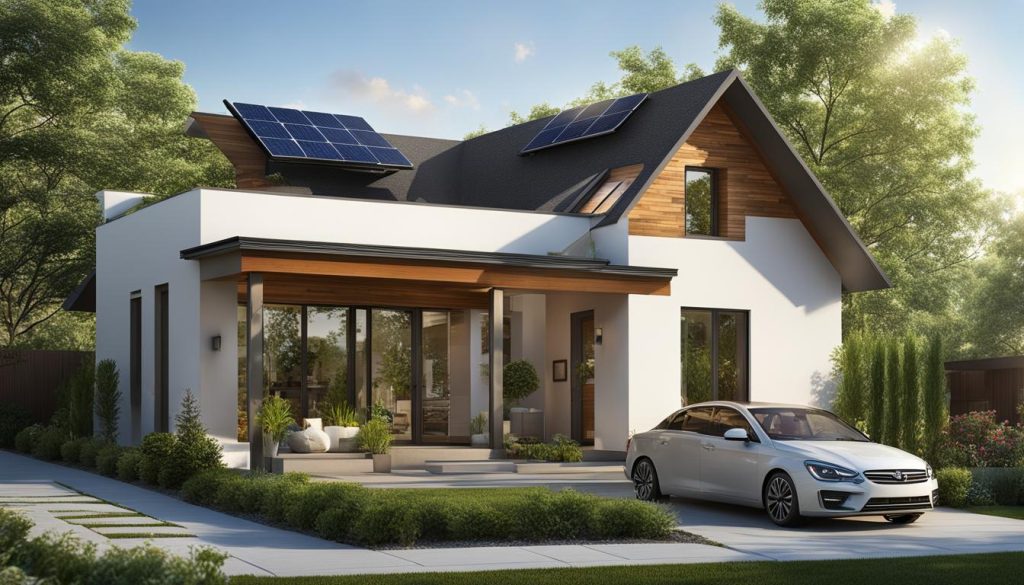Welcome to our article on energy-efficient landscaping! We’re excited to share with you the many benefits of creating a landscape that not only beautifies your property but also helps reduce your bills and benefit the environment. By incorporating strategic shade placement and solar panels, you can achieve a more sustainable and efficient outdoor living space. Keep reading to learn more about how energy-efficient landscaping can work for you.
Understanding Energy-Efficient Landscaping
At its core, energy-efficient landscaping involves designing and maintaining outdoor spaces with the goal of reducing energy consumption and promoting sustainability. There are numerous benefits to adopting this approach, including lower utility bills, improved air and water quality, and a reduced carbon footprint.
Creating an energy-efficient landscape involves a combination of strategic design choices and careful maintenance practices. By selecting drought-tolerant plants, minimizing turf grass, and utilizing shading techniques, we can create beautiful and sustainable outdoor spaces that benefit both our wallets and the environment.
Additionally, energy-efficient landscaping can enhance the overall value and aesthetic appeal of your property. A well-designed and maintained landscape can provide a relaxing outdoor space for entertaining, recreation, and even gardening.
Overall, energy-efficient landscaping is a smart and environmentally friendly approach to outdoor design. By reducing our energy consumption and promoting sustainability, we can create beautiful and functional outdoor spaces that benefit both ourselves and the planet.
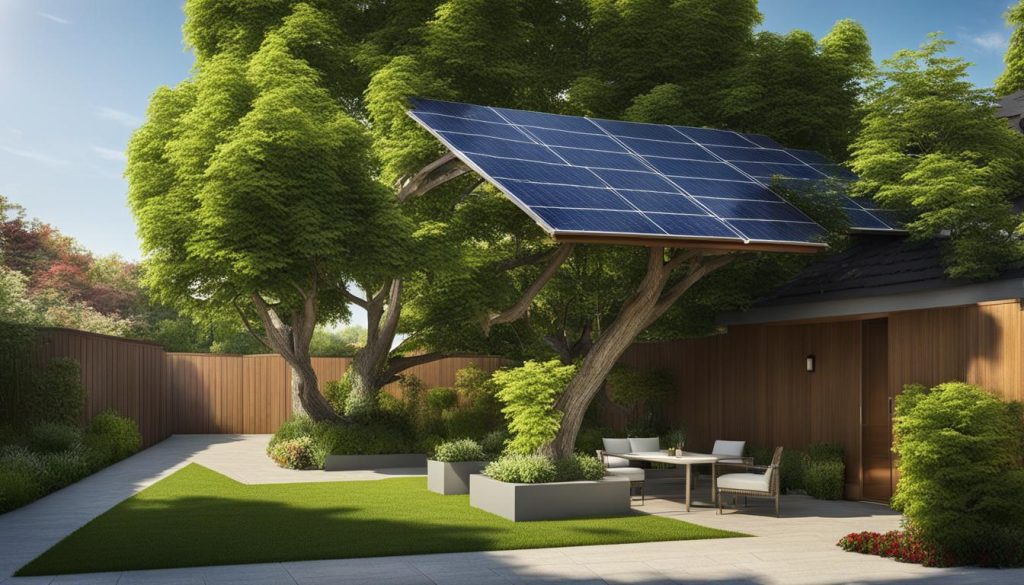
Harnessing the Power of Shade
Strategic shade placement is a key aspect of energy-efficient landscaping. By positioning trees, shrubs, and other structures carefully, you can reduce the amount of direct sunlight that hits your home and yard. This can, in turn, minimize the cooling demands of your property and save you energy and money.
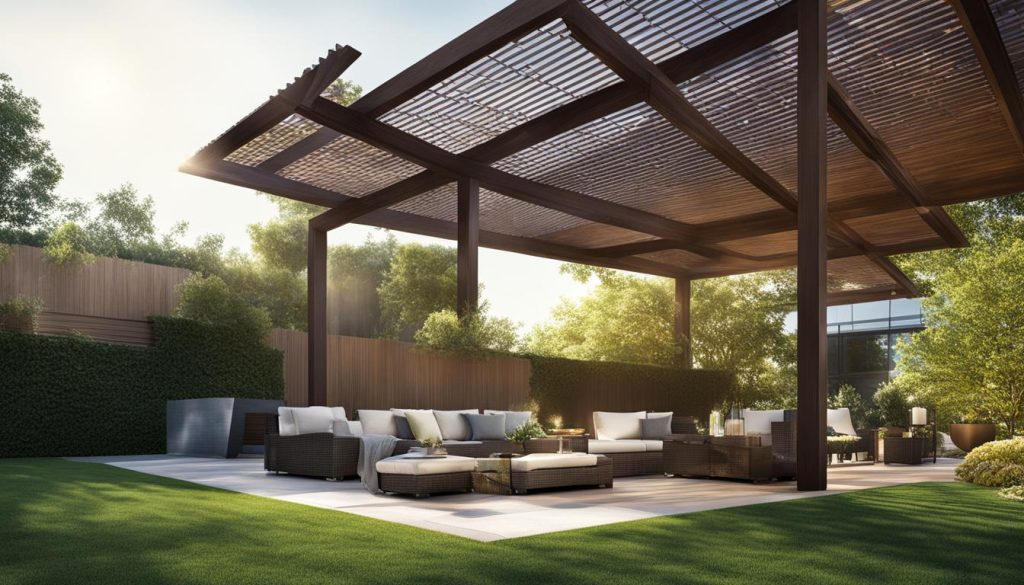
One of the best ways to harness the power of shade is by planting deciduous trees on the south and west sides of your property. These trees can provide shade during the summer when the sun is high in the sky, then lose their leaves in the fall, allowing sunlight to reach your home during the winter months.
Another option is to use structures such as pergolas, arbors, and trellises to create shaded areas in your outdoor living spaces. These structures not only provide relief from the sun but also add an aesthetic element to your landscaping.
Energy Efficiency and Cooling Effects
Shade can provide natural cooling effects on your property. By blocking the sun’s rays, shade can prevent heat gain in your home and yard. This means that you may not need to use as much air conditioning during the summer, which can significantly reduce your energy bills.
In addition, shade can create a more comfortable outdoor living space. By providing relief from the sun, you can enjoy your yard and patio even on hot summer days.
Overall, shade placement is a simple yet effective way to improve the energy efficiency of your landscaping. By carefully considering the position of trees and structures, you can reduce cooling demands, minimize your energy consumption, and save money on your bills.
Selecting Energy-Efficient Plants
Choosing the right plants for your energy-efficient landscape is crucial. One of the best ways to conserve energy and promote sustainability is to incorporate native species that are adapted to your local climate. Native plants have evolved to thrive in their natural environment, making them resilient to pests, diseases, and weather conditions. By selecting these plants, you can reduce the need for water, fertilizer, and maintenance, while also providing habitat for local wildlife.
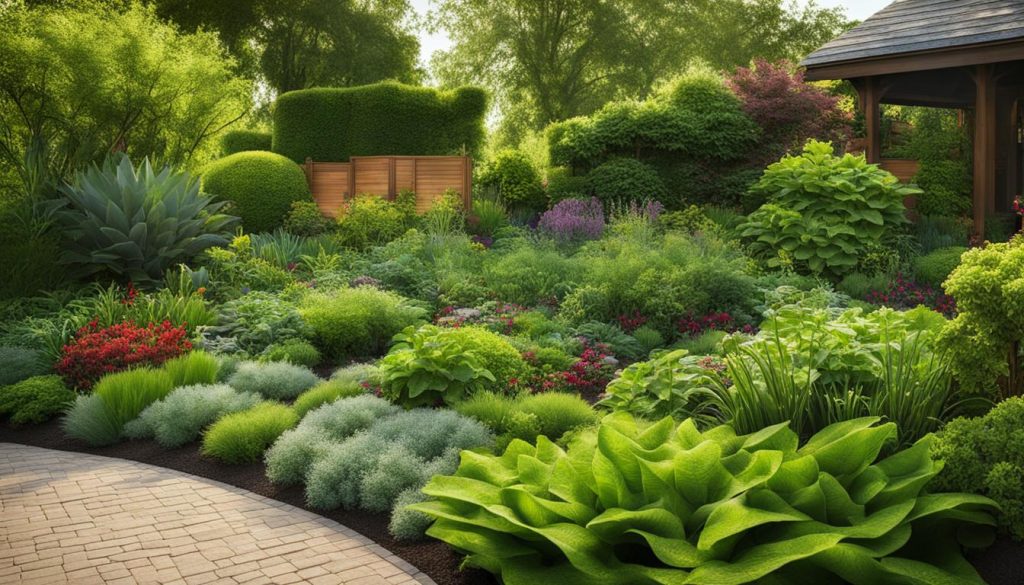
Another benefit of choosing energy-efficient plants is water conservation. Drought-tolerant plants have adapted to survive in arid conditions, making them an excellent choice for water efficiency. You can further enhance water conservation by incorporating low-maintenance options, such as succulents and ornamental grasses, into your landscape design.
Consider the following when selecting energy-efficient plants:
- Choose native species adapted to your climate
- Select drought-tolerant plants to conserve water
- Incorporate low-maintenance options to reduce maintenance demands
- Consider plants that attract local wildlife for added ecological benefits
By selecting energy-efficient plants, you can create a beautiful and sustainable landscape that benefits both you and the environment.
Integrating Solar Panels in Your Landscape
One of the most exciting aspects of energy-efficient landscaping is the integration of solar panels. Solar panels are a great way to generate renewable energy and reduce your carbon footprint. They work by converting sunlight into electricity, which can then be used to power your home or business.
When it comes to integrating solar panels into your landscape design, it’s important to consider the sun exposure of your property. Ideally, you want to place your solar panels in an area that receives maximum sunlight throughout the day. An unobstructed southern exposure is the best option for most properties in Canada.
At the same time, you don’t want your solar panels to detract from the beauty of your landscape. Thankfully, there are many innovative ways to incorporate solar panels into your outdoor space. For example, you can install them on a pergola or on the roof of a gazebo. This will not only provide you with shade but also generate electricity to power your outdoor lighting and other features.
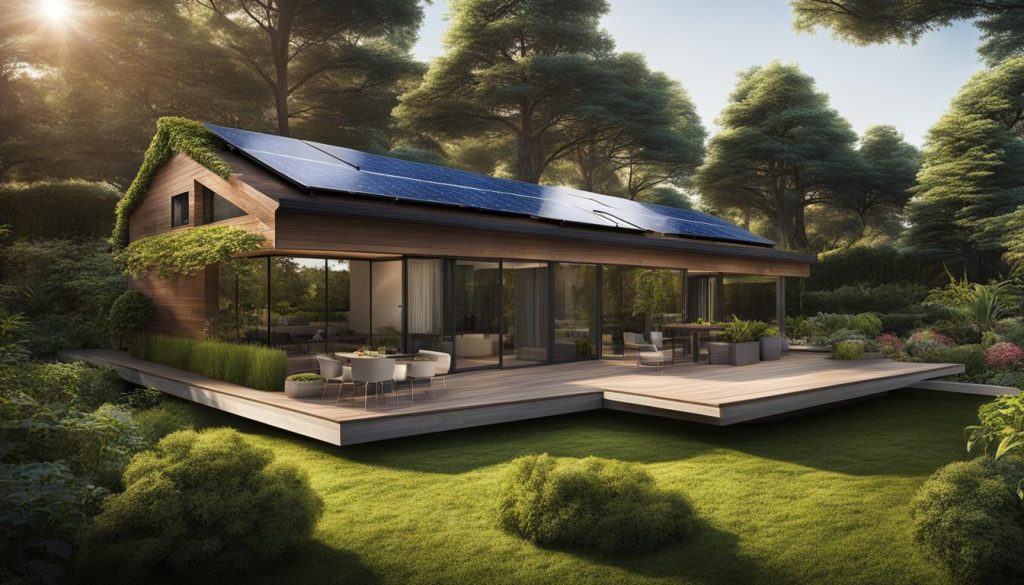
Investing in solar energy has numerous benefits. For one, it can help you save money on your energy bills. Over time, the cost of installing solar panels can pay for itself, and you’ll continue to reap the benefits of free energy for years to come. Additionally, solar energy is a clean and sustainable source of power, which means you’re doing your part to reduce your impact on the environment.
At the end of the day, integrating solar panels into your landscaping is a smart investment that can benefit both your wallet and the planet.
Designing Outdoor Living Spaces
At Landscaping Vaughan, we believe that designing outdoor living spaces is an art. It’s about creating a beautiful and functional space that integrates seamlessly with nature and enhances your lifestyle while reducing energy consumption. Here are some tips for designing outdoor living spaces that are both comfortable and energy-efficient.
Energy-Efficient Lighting
Lighting is an essential part of any outdoor living space, but it can also be a major energy drain. That’s why we recommend using energy-efficient lighting options, such as LEDs or solar-powered lights. Not only do these options consume less energy, but they also last longer and are more durable than traditional lighting.
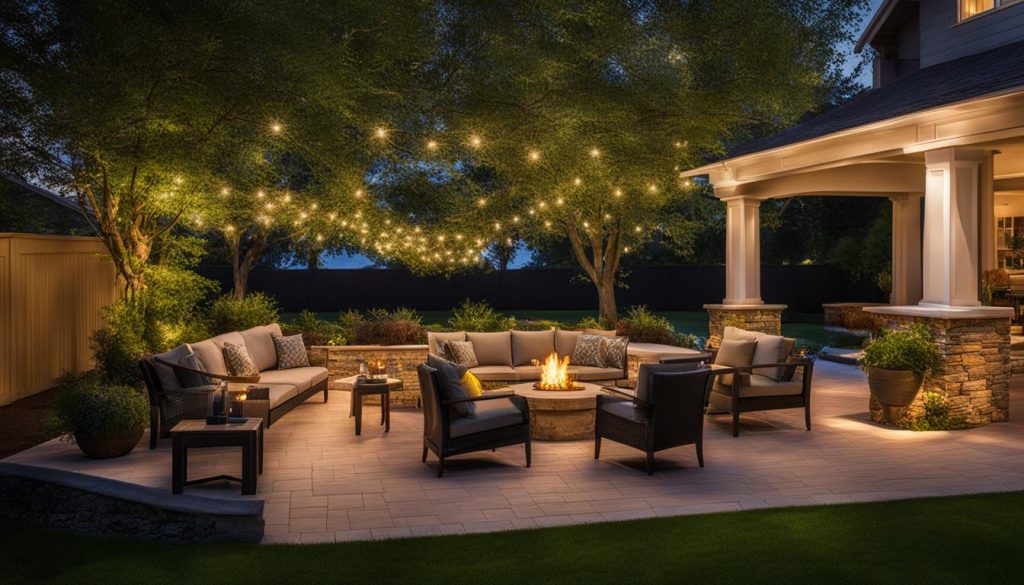
Water Features
Water features are a great way to add ambiance to your outdoor living space while reducing energy consumption. Consider installing a rainwater harvesting system to collect water for your water feature instead of using municipal water. This not only saves on water bills but also promotes sustainability.
- Choose a water feature that recirculates water, such as a fountain or a pond with a small pump, instead of one that requires a constant flow of water.
- Position your water feature in a shaded area to reduce evaporation.
- Use plants or rocks to provide shade and create a natural-looking environment.
By incorporating water features into your landscaping design, you can create a relaxing and eco-friendly oasis in your own backyard.
Sustainable Materials
Choosing sustainable materials for your outdoor living space is another way to reduce your environmental impact. Opt for locally sourced materials, such as stone or wood, that require less transportation and are more durable than their imported counterparts. Additionally, consider using recycled or upcycled materials such as pallets or reclaimed lumber to add a unique and eco-friendly touch to your space.
At our company, we believe that designing an energy-efficient outdoor living space is not only good for the environment but also enhances your quality of life. By incorporating these tips, you can create a space that is not only beautiful but also sustainable and environmentally conscious.
Maintenance and Irrigation Strategies
Ensuring that your energy-efficient landscape remains healthy and thriving requires proper maintenance and irrigation strategies. Here, we will provide tips on how to maintain your landscape while minimizing water usage and promoting plant health.
Maintenance Tips
- Regular pruning of trees and shrubs can promote healthy growth and improve the overall appearance of your landscape.
- Mulching helps to retain moisture in the soil, reduces weed growth, and regulates soil temperature. Opt for organic mulches such as wood chips or shredded leaves.
- Soil management is essential for plant health. Test your soil regularly and add organic matter to improve nutrient levels.
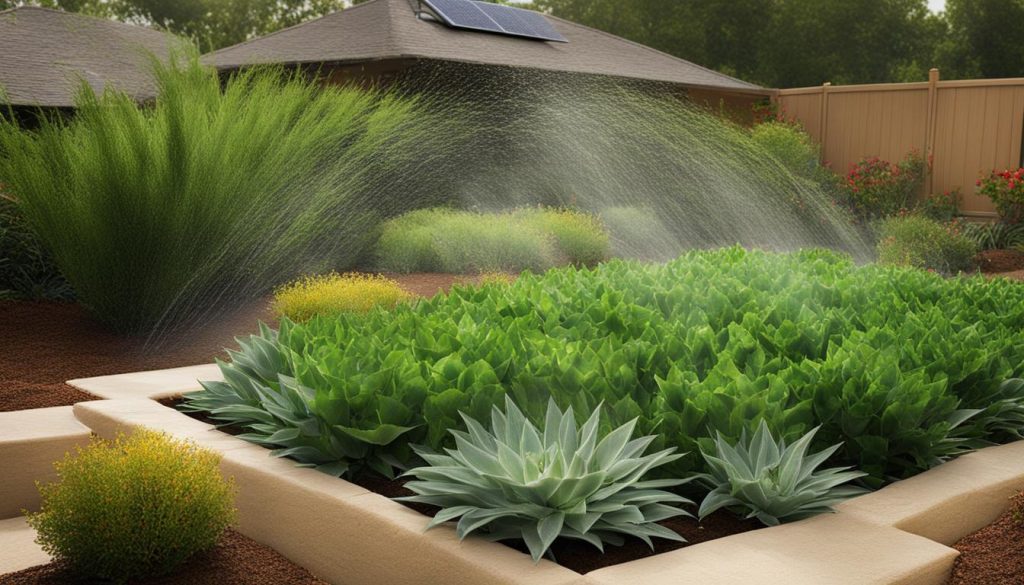
Irrigation Strategies
The key to an efficient irrigation system is to provide just the right amount of water at the right time. Here are some tips for minimizing water usage:
- Install a water-efficient irrigation system such as drip irrigation or soaker hoses.
- Water plants early in the morning or late in the day to reduce evaporation.
- Avoid overwatering plants as it can lead to waterlogged soil and root rot. Aim for deep, infrequent watering sessions.
By implementing these maintenance and irrigation strategies, you can ensure your energy-efficient landscape remains healthy and thriving while also minimizing water usage and promoting sustainability.
Conclusion: Embrace Energy-Efficient Landscaping
We hope this article has provided you with valuable insights into the world of energy-efficient landscaping. By implementing the strategies and ideas presented here, you can create a beautiful and sustainable landscape that benefits both you and the environment.
Energy-efficient landscaping offers numerous benefits, including reduced energy consumption, lower bills, and a positive environmental impact. By strategically placing shade trees, selecting energy-efficient plants, integrating solar panels, and designing functional outdoor living spaces, you can create a space that not only looks great but also promotes sustainability.
Maintaining Your Energy-Efficient Landscape
Proper maintenance and irrigation are essential for the long-term success of your energy-efficient landscape. By regularly pruning, mulching, and managing your soil, you can ensure your plants stay healthy and continue to contribute to the energy efficiency of your property. Additionally, investing in water-efficient irrigation systems such as drip irrigation can significantly reduce water usage and promote plant health.
By embracing energy-efficient landscaping, you can take a step towards a more sustainable future. Not only will you save money on energy bills, but you’ll also be doing your part to reduce your environmental impact. So why not start today? With a little planning and effort, you can create a landscape that is both beautiful and eco-friendly.

